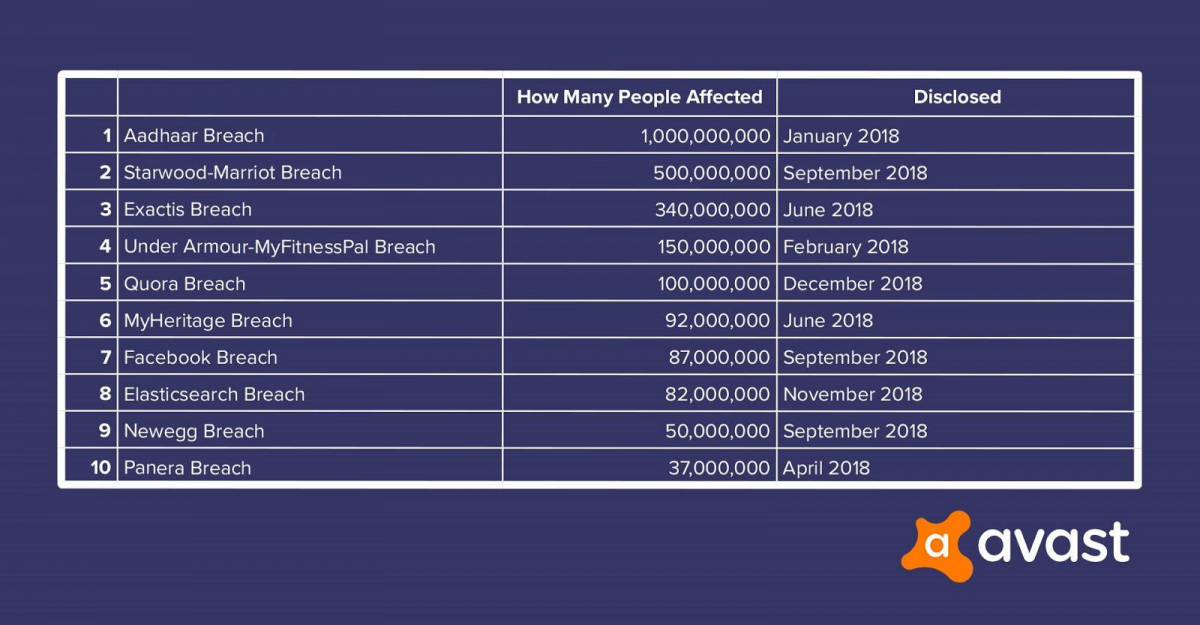Digital safety and security in the workplace: Learn how to protect your data
 Photo by Matthew Henry on Unsplash
Photo by Matthew Henry on UnsplashThere was a time, a couple of decades ago when data security meant protecting your files with "security guards, closed circuit cameras, and a durable lock in the filing cabinets."
However, with the advent of digital technology, the number of cyber attacks and data security breaches in organizations are rampantly increasing. Data security has become an issue that has been gaining more prominence in the news recently.
According to global research company Cybersecurity Ventures, "Cybercrime will cost the world more than $6 trillion annually by 2021."
Jason Neal, Director of IT and Web Development for Brightspot Incentives & Events, noted that "Today, the topic of securing data is a very complex one, and that complexity has greatly impacted businesses."
What companies ought to do: Protect your business against data security threats.
Data security is now a crucial issue that has been gaining more importance recently as news regarding hacked emails and cyber attacks from prominent companies are continually making the headlines over the past years.

Organizations need to realize that now more than ever, it is crucial to protect your business against digital security threats. Recovering an organization’s losses and even its reputation from a data breach is a herculean task. This is why you should consider safeguarding your business from data security breaches and cyber attacks by having a robust security plan in place.
Here are several tips to ensure that your organization will not fall victim to these data security breaches:
Craft an ISMS by creating a data security policy.
Organizations are vulnerable to security breaches because employees would often use many types of wireless computing devices that are connected to open networks with weak security.
Creating an Information Security Management System (ISMS) is an excellent way to start protecting your organization's data. An ISMS will help your company establish policies, processes, and protocols to manage the risks and vulnerabilities of your company's data management. It will also ensure that your data security efforts are aligned with your organization’s data policy guidelines.
Establish a "digital safe place."
Organizations will regularly hold meetings that need Internet accessibility with robust security controls. This is why a digital safe place or a storage space for verified data is needed. Companies can use a corporate file server, a secure cloud storage solution, or even an encrypted flash drive. Employees need to remember that data that is not stored in this safe place is considered to be vulnerable to a breach. Thus, they would be more wary of storing sensitive company information to unverified file storage systems.
Fortify security on all your company’s devices.
People are often led to believe that when it comes to data security, only servers and work computers are vulnerable. However, today's digital workplace means that mobile devices are also often used to access sensitive company information. It is crucial that every smartphone, tablet, and any other digital accessories are kept protected. Keeping the latest software up to date and establishing security protocols on mobile devices will ensure that unauthorized users can not easily access it.
Invest in robust data security technology.
As the cliché goes, prevention is better than cure. Your first line of defense against cyber attacks is to establish a reliable data security technology that will protect you from it. Investing in a good anti-spam solution or using email authentication solutions for your company are just some of the ways to start the campaign on data security protection.
Adhere to the GDPR rules.
Whether your company is part of the European Union or not, adhering to the rules of the General Data Protection Regulation (GDPR) is simply a good business practice. Your company can opt to follow the stricter GDPR data privacy laws instead of operating on separate data privacy standards. Being compliant with the GDPR will ensure that your company is adhering to the international legal guidelines and frameworks on data privacy.
Back up your data.
Despite all the security measures in place, your organization can still be vulnerable to data breaches. This is why backups are essential to ensure that when your company’s data is compromised, you still have backups that will make it easier to restore everything.
Craft a response plan.
In the event that a data breach occurs despite all the security protocols in place, it is important that a response plan is in place. A recovery plan needs to be laid out the moment that a data breach occurs. A transparency mechanism that will notify stakeholders that were affected in the data breach should also be included in the response plan.
What everyone ought to do: Help your company protect its data
It should be noted that keeping the workplace digitally safe is not just the sole responsibility of your company’s IT team. Employees tend to be complacent with their digital footprint when they realize that their company has a robust data protection safeguards.
The digitally-connected workplace that we have today means that everyone in the organization has a shared responsibility to protect your company’s proprietary information. Instead of putting blind faith in your company's data protection protocols, employees also need to educate themselves on how they can be a proactive custodian of their company's data.
Since human error can also be a significant factor in many data security breaches, training, and educating your employees on safeguarding data privacy is imperative.
Here are some things that your organization can do to educate your employees regarding data security and privacy:
- Post actionable and straightforward online safety tips around the office.
Every once in a while, being reminded of how employees can help protect their private data will keep them vigilant. Simple gestures such as posting occasional data security tips in the break room will go a long way to helping employees be more proactive on data security.
- Hold a brown bag lunch to discuss your company’s IT security and acceptable use policies.
When it comes to educating your employees, you need to make sure that they understand the grave threat that any cyber attack may have on the company. Organizations need to keep their employees updated on the latest data security protocols and make sure that they understand the dos and don'ts of their company's data security policies.
- Incorporate data security precautions into your employee handbooks and newsletters.
Organizations need to make sure that data security is a priority in the company. Moreover, employees need to be fully aware of that fact. Outlining the company's data security policies in the employee handbook and even mentioning it in the company newsletter will show the organization’s solid commitment to data protection.
- Host an employee training on cybersecurity.
Employees also need to be aware of the consequences that a cyber attack may have on the organization. Training them to be mindful of what to look for to avoid phishing links, malware, and other cyber hazards are essential. It will make them more vigilant and be wary of potential hacker infiltration.
Is your workplace digitally safe?
This 2019, advancements in AI, the Internet of Things (IoT), and smart home appliances are gaining more prominence across the globe. With the increased use of the web and cloud services, every organization, regardless of its size or industry, are all facing cybersecurity challenges.
Whether it’s their client’s personal information or the company’s intellectual property, organizations need to be more proactive about keeping their data secure. Ricoh Philippines has a proven track record of creating IT infrastructure services that will protect your organization’s data from internal and external threats by creating a robust data protection strategy.
References:
Alderton, M. (2018). 16 WAYS TO KEEP EVENT DATA SAFE. (cover story). Successful Meetings, 67(10), 22–27.
At Work - Stay Safe Online. (2019). Stay Safe Online. Retrieved 23 May 2019, from https://staysafeonline.org
Gott, A. (2015). How to Make Your Workplace More Secure - The LastPass Blog. The LastPass Blog. Retrieved 23 May 2019, from https://blog.lastpass.com/2015/10/how-to-make-your-workplace-more-secure
News & Events
Keep up to date
-
18 Dec
Ricoh recognised as a Top 5 global AV Integrator in SCN Top 50 Systems Integrators 2025
-
11 Dec
Ricoh Recognised as a Sustainability Leader in Quocirca's 2025 Report
-
31 Oct
Ricoh perovskite solar cells installed on Japan Aerospace Exploration Agency cargo transfer spacecraft1 HTV-X1
-
17 Oct
Ricoh recognised among Forbes’ World’s Best Employers 2025
